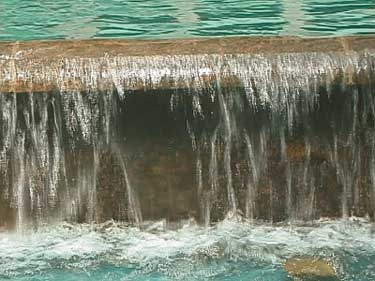Super Recorders Page 4
| In the Lab | ||
| All three recorders were fine DVD players as indicated by our standard series of lab tests. But I was surprised to find that the Panasonic's progressive-scan component-video output had a moderate case of the color-smearing chroma-upsampling "bug," since other Panasonic DVD players we've tested haven't had this problem.
Used as recorders, these three machines were pretty well matched in video and especially audio performance. All use two-channel Dolby Digital encoding for the audio, and all of the encoders do a good job (the Panasonic also records two-channel PCM in its highest-quality recording mode). So for nearly all typical program material, such as off-air and home-camcorder footage, audio quality will never be an issue. In fact, you could use any of these machines as an audio-only (stereo) recorder and get very long recording times. Since all three models use the same stereo Dolby Digital data rate for all video recording modes, their audio performance doesn't change when you select the optimum mode for your recording requirements. Video performance is another story. With each of these recorders it changed, sometimes dramatically, as I switched recording mode, becoming progressively worse as the maximum recording time on a disc increased. That's because DVD recorders employ MPEG data compression to record video. As the amount of compression increases (or the recorded bit rate decreases, which is the same thing), you're likely to see encoding "artifacts" - unrealistic-looking defects in the picture - like traces of the rectangular building blocks that make up an MPEG-encoded picture even in scenes where there are no straight lines ("blocking" or "macroblocking"). To obtain their extremely long recording times, all three machines decrease the encoding bit rate and at some point shift to something substantially less than a full 720 x 480-pixel DVD image. This was clearly revealed by our record/playback resolution tests. The Panasonic and Sony models at their 4-hour mode and the Philips at its 2 1/2-hour mode record only every other horizontal pixel, resulting in a horizontal resolution of around 260 lines, a little less than half the 540 lines of a standard DVD. What you see is a distinctly softer-than-usual image. As you increase recording time further, each deck will at some point record only every other vertical pixel, halving the vertical resolution. The Panasonic and Sony recorders used this type of encoding in their 6-hour modes. The Philips didn't resort to this until its 8-hour mode, but with a bit rate of around 1.2 megabits per second, the picture was so distorted that it was close to unwatchable for all but the simplest video material, like talking-head news shows. In their top-quality modes (usually 1 to 2 hours maximum recording time), however, all three machines delivered full 540-line DVD resolution and clean images free from obvious blocking and other artifacts with the vast majority of program material. The Panasonic was slightly better than the other two machines at recording our acid-test DV camcorder fountain footage (see picture), which seems to be impossible to encode without visual blemishes at even the highest DVD bit rate, much less any mode longer than 2 hours. But even the visibility of the artifacts produced by the Sony and Philips recorders on this footage can vary depending on whether the machine being used to play the recorded disc has special MPEG playback noise-reduction features, especially for "block noise." Both the Panasonic and Sony decks have this and other MPEG noise-reduction features, which noticeably reduced the visible blocking in the fountain scenes when I turned them on. |
- Log in or register to post comments





































































